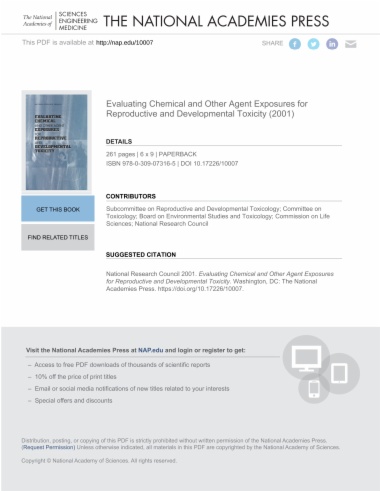

The United States Navy has been concerned for some time with protecting its military and civilian personnel from reproductive and developmental hazards in the workplace. As part of its efforts to reduce or eliminate exposure of Naval personnel and their families to reproductive and developmental toxicants, the Navy requested that the National Research Council (NRC) recommend an approach that can be used to evaluate chemicals and physical agents for their potential to cause reproductive and developmental toxicity. The NRC assigned this project to the Committee on Toxicology, which convened the Subcommittee on Reproductive and Developmental Toxicology, to prepare this report. In this report, the subcommittee recommends an approach for evaluating agents for potential reproductive and developmental toxicity and demonstrates how that approach can be used by the Navy.
This report has been reviewed in draft form by individuals chosen for their diverse perspectives and technical expertise, in accordance with procedures approved by the NRC's Report Review Committee. The purpose of this independent review is to provide candid and critical comments that will assist the institution in making its published report as sound as possible and to ensure that the report meets institutional standards for objectivity, evidence, and responsiveness to the study charge. The review comments and draft manuscript remain confidential to protect the integrity of the deliberative process. We wish to thank the following individuals for their review of this report: James Chen (National Center for Toxicological Research), George Daston (Procter and Gamble Company), Jerry Heindel (National Institute of Environmental Health Sciences), Grace Lemasters (University of Cincinnati), and John Young (National Center for Toxicological Research).